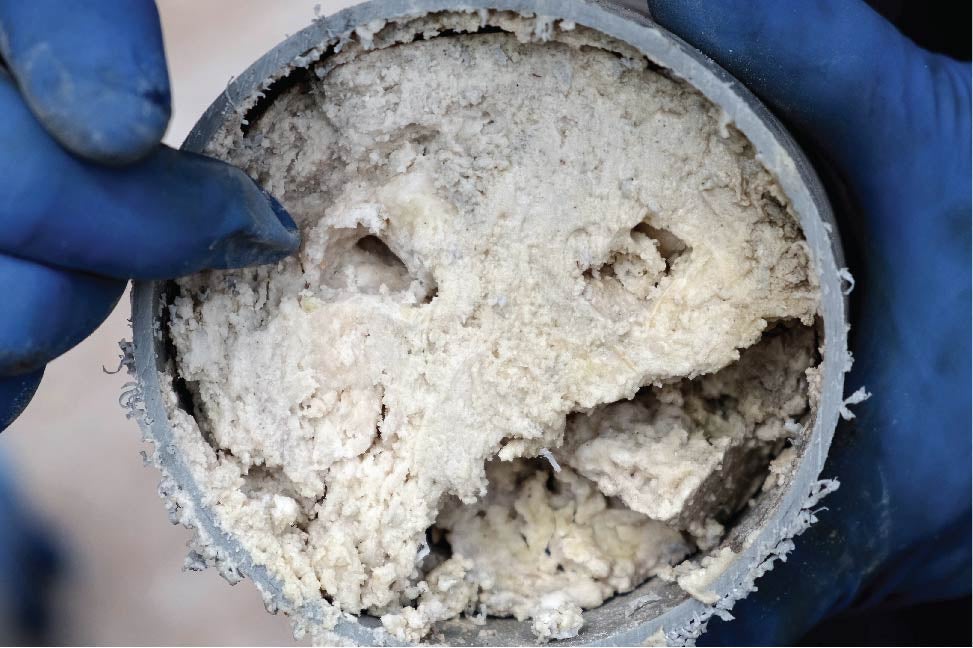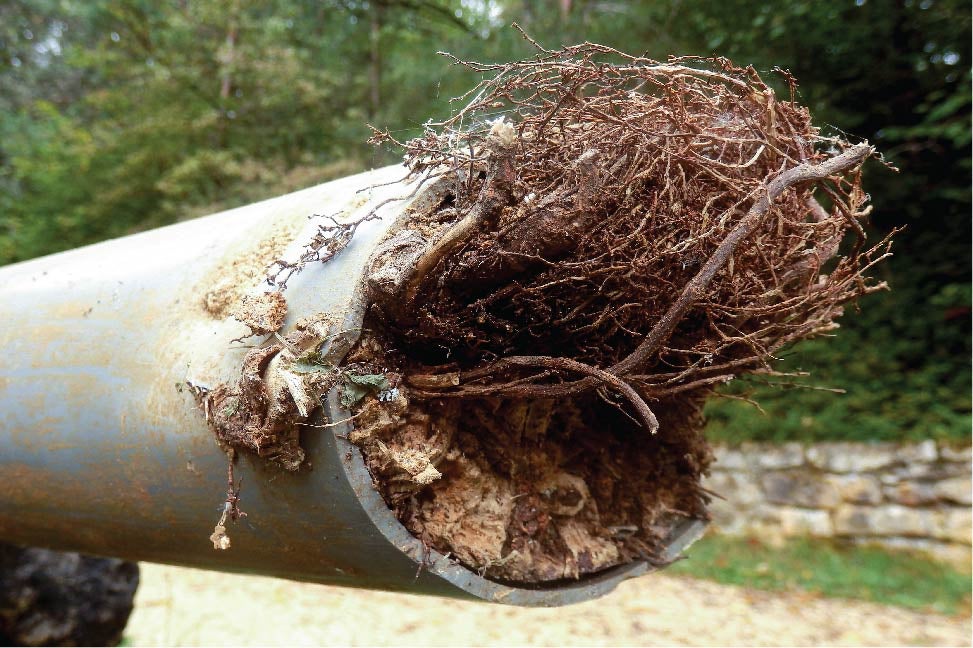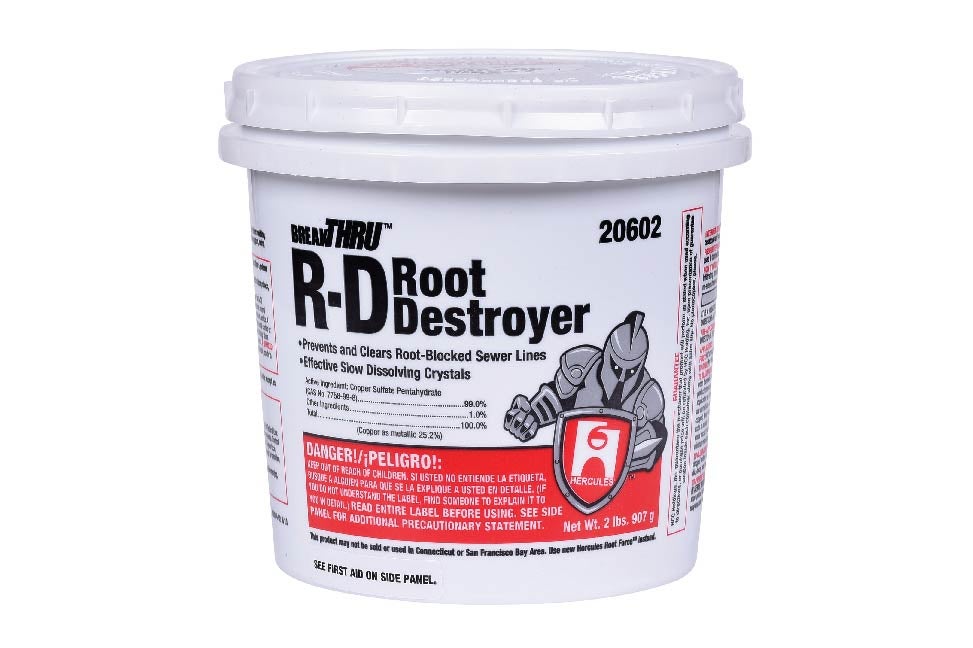Almost every homeowner has dealt with a clogged drain. To solve the problem, it’s usually as easy as using a plunger or quickly snaking the drain. However, it's not always that simple.
Sometimes the issue is much worse than you might realize and could result in a costly affair down the line, such as paying a plumber or drain-cleaning service over $500 to clear your main drain line.
The best way to avoid major expenses is to implement a sewer maintenance program, including identifying issues at an early stage. Below we are sharing common causes of sewer clogs, major warning signs and how to prevent clogs from happening in the first place.

What are the Common Causes of a Clogged Sewer Line?
- Flushable wipes: Ask any plumber how they feel about flushing "flushable wipes," and they will tell you it's a bad idea. Especially if your drains are draining slowly, which probably means you already have a partial blockage. When those wipes enter the drain line, they will compact over time, creating a full clog. Some plumbers have experienced pulling flushable wipes out of a drain that's up to 30 feet in length. It's no fun task, not to mention the cost associated with hiring a drain-cleaning service to clear the line.
- Flushing other hygiene products: Similar to flushable wipes, other hygiene products like Q-tips or feminine hygiene products are not meant to be flushed down the toilet. Tissues and paper towels are other common products that cause problems since they are designed not to break down. A general rule of thumb? If it's not toilet paper, don't flush it.
- Improper use of garbage disposals: Improper use of your garbage disposal can contribute to a build-up in the main line. A garbage disposal should only be used for small amounts of scraps. You may think that throwing those potato skins down the garbage disposal will make your kitchen clean-up easier.
Still, the thick starchy mess you just created could cause some serious damage to your pipes over time. Garbage disposals are only meant for biodegradable materials. The grinder chops it up into manageable sizes then disposes of it properly. Potato peels, eggshells and coffee grounds are some of the main culprits plumbers deal with when clearing clogged sewer lines.
- Greases and fats: Many people pour grease right down the drain, not realizing that the hot liquid will immediately solidify once it hits your cold pipes, creating a grease blockage. Grease blockages can be tough to clear out, and most of the time, they have to be jetted out. Jetting is another costly service offered by drain cleaners. The better alternative to pouring grease down the drain is to capture it in a container and dispose of it properly according to your local municipality's recommendations.
- Tree-root intrusion through pipe joints: In old clay sewer lines, drain sections were connected by inserting a non-bell (hub) end of the pipe into the hub of the next section and filling the gap with concrete. With time, the concrete deteriorates, and roots grow through the openings and expand, damaging the piping. Roots can also grow through partially collapsed pipe or even rotted-out cast iron. If a sewer line has a large root blockage, the sanitary system will shut down.

Be sure to hire a professional every couple of years to inspect your mainline for any root blockages. If you suspect significant root intrusion, we recommend inspecting the mainline every six months. If you have a root blockage, the company will likely recommend a maintenance solution, like Hercules® R-D™ Root Destroyer that prevents and stops root growth in external drain lines.

Because this formula interacts with water, the drain line will need to be mechanically opened (snaked) to allow for water flow if it is completely blocked. Once the line is open, the service tech can apply Root Destroyer at or near the root clog's location.
- Old system scale buildup: Scale buildup tends to form on the inside of older pipes, whether clay or metal. Over time, the scale buildup will create a rough surface, increasing the potential for a clog to form in those areas.
What are the Signs of a Clogged Drain Line?
- Slow-draining drains could be a sign of a clogged or partially clogged drain.
- Gurgling (a hollow bubbling sound) while draining is usually a sign of a partial blockage in the system. Vents in your home's "DWV System" (D – drain, W – waste, V – vent) promote airflow throughout the piping system. As water drains, the vents allow pressures to remain neutral throughout the system. As water flows through the pipe, a partial blockage will cut off that airflow. Usually, the air will pass, allowing the water to continue draining; but when a blockage closes off the pipe completely, the air will escape via the drain instead. And that's what's causing the gurgling.
- Unpleasant smells coming from your drains are likely caused by standing water within the drain line.
- Water coming back up your drains and other fixtures like toilets, bathtubs or washing machines indicates a blockage. If you have a full blockage further down the line, you might experience backups from other fixtures in the home.
Tips to Prevent Clogged Sewer Lines
- Pay attention to what you flush down the toilet. If it's not toilet paper, don't flush it.
- Use food strainers or hair catchers to collect food particles, debris, hair or anything else that might get into the drain line. Food strainers are also a helpful tool to keep food scraps like potato peels, eggshells and coffee grounds out of the garbage disposal.
- Flush your drains once a month by filling up the tub or sink with water and then allowing it to drain. If your drain line is clear, it should drain freely. If you have a blockage, you will notice the water draining slowly or not at all. Doing this monthly will also help flush out your pipes because the large water flow will help clear the drain of smaller particles or blockages. Be sure not to leave the fixture unattended. While flushing is helpful, it could cause water damage if it overflows.
- Have your sewer line inspected every two years, especially if you've had issues in the past. Hire a drain-cleaning or sewer service company or a plumber to 'scope' the line and identify any problems. Scoping involves sending a remote camera down the line for a visual inspection. Depending on the findings, the company will recommend jetting or a drain cleaner to clear out the line. This activity is especially important to identify root intrusion.
- Address an issue as soon as it arises. If you notice any of the above warning signs, take care of the problem immediately. Don't wait for a mainline blockage, because you could be left with costs upwards of $1,000 to dig up your yard and clear out your main sewer line.